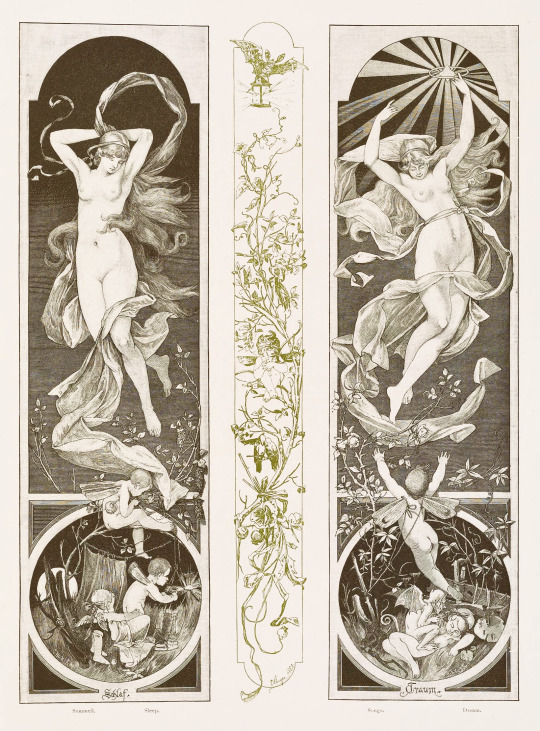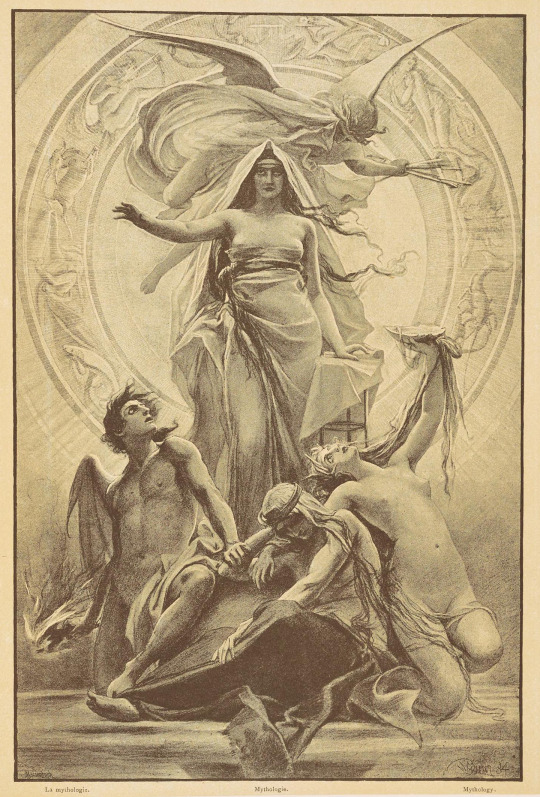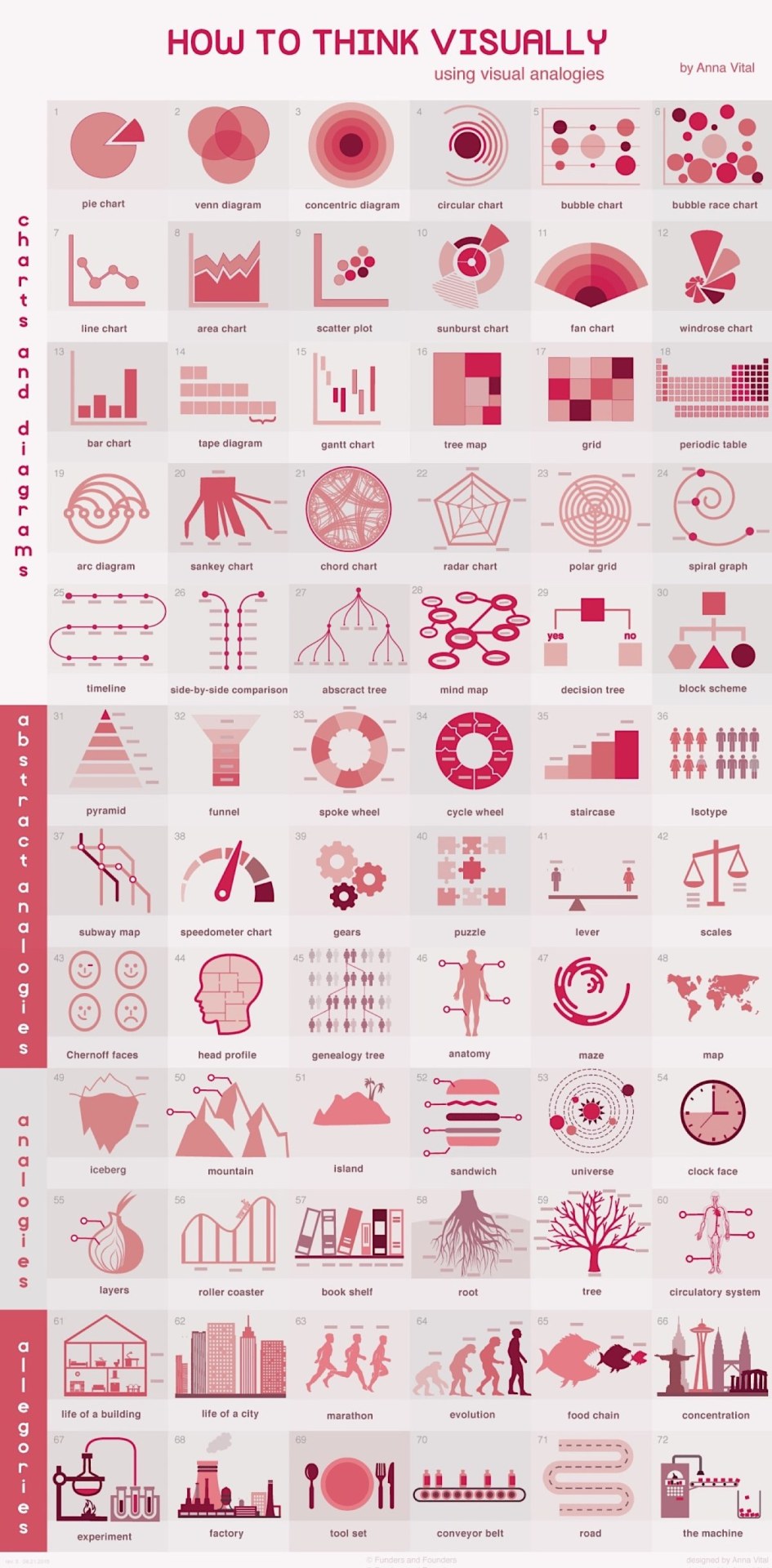#allegories
Explore tagged Tumblr posts
Text
River spirit keeps trying to draw me into morally instructive allegories, but I keep pointing out that no answer I can give would fulfill the purpose of the exercise because I've already read this one. Hoping they can think of one I've never heard of before they get fed up and just eat me instead.
662 notes
·
View notes
Text

Ernst Unger (1889-1954), 'Sleep & Dream', ''Allegorien und Embleme'', 1882 Source
#Ernst Unger#german artists#sleep#dream#Allegorien und Embleme#allegories#vintage art#vintage illustration#traum#schlaf
4K notes
·
View notes
Text

Illustration from Allegorien, neue Folge, Martin Gerlach, 1900
#art#illustration#martin gerlach#austrian artists#hands of time#photography#1900s#vintage#allegories#emblems#black and white#wings#photomontage#19th century#early 20th century
85 notes
·
View notes
Text

Carlo Giuseppe Ratti – Allegory of the thirteen values of the republic: the Peace embracing the Justice (after 1783)
#my favorite couple <3#art#art history#carlo guiseppe ratti#italian#lesbian#lesbian art#wlw#women#fine art#painting#oil#oil on canvas#allegories#justice and peace#XVIIIth century#18th century#female homoeroticism
254 notes
·
View notes
Text
This is a post about generative AI
“I’m loving the new Food Generator! You just tell it what you want to eat, and it appears right there on the table! Never mind the fact that the machine gets its ingredients by teleporting them out of other people's fridges, and it has an exhaust pipe belching diesel from the back of the house, and sometimes it puts glass in the food. I can make pizza with any topping I want, and the number of dishes I have to clean is way down!”
#ai (derogatory)#metaphors#allegories#I just shared this message with my local writers' group#I am shocked and baffled by the number of people happy about AI#people I otherwise thought well of#insert meme here: 'I feel like I'm taking crazy pills!'#do you honestly not KNOW about the problems or are you sticking your fingers in your ears#and hoping they'll go away if you go LALALA loudly enough?#I assure you#they will not
97 notes
·
View notes
Text
Why Spider-Man 3 is an Allegory for Toxic Masculinity 🕷

Who is Sam Raimi's Spider-Man?
Sam Raimi’s Spider-Man trilogy gave us one of the most groundbreaking, relatable character developments in superhero cinema. Tobey Maguire’s Peter Parker isn’t a rich genius or a literal god — he’s an awkward, dorky New Yorker who’s always five minutes late, struggles to pay rent, and stammers around the girl he loves. He’s not cool, not slick, not untouchable. He's earnest, kind-hearted, and painfully human. Peter is just trying his best, even when his best sometimes isn’t enough. At his core, Peter embodies the ideal of “your friendly neighborhood Spider-Man.” He’s a hero because he cares about the small things —about people, about community, about kindness. His powers don’t make him arrogant; they weigh heavily on him. And that's what makes his slow, subtle seduction by the black suit in Spider-Man 3 so devastating to watch. It’s not that Peter suddenly turns evil — it’s that he forgets who he is.
What is Toxic Masculinity?
Toxic masculinity is not the idea that masculinity itself is bad. It’s the specific, destructive brand of masculinity that says "being a man" means being ruthless, violent, dominant, emotionally dead inside. It punishes vulnerability and rewards cruelty. It’s the attitude we see pushed by influencers (hi, Andrew Tate and Myron Gaines) who teach boys that empathy is weakness, that real men “win” at the expense of others, that compassion is for losers. You see toxic masculinity in media where "strong male leads" are emotionally constipated, solve everything with violence, and never admit when they’re wrong. You see it when “strength” is measured by how much you can hurt others, not by how much you can heal. It tells boys and men that the only acceptable emotions are anger and pride — and it leaves everything else to rot in silence. It’s poison pretending to be power.
Peter Parker and the Black Spidey Suit
In Spider-Man 3, Peter Parker doesn’t find the symbiote. The symbiote finds him. It doesn’t demand much at first—just a little connection, a little enhancement. When Peter first wears the black suit, it feels thrilling. It’s sleek, powerful, intimidating. It makes him faster, stronger, sharper. For a moment, it feels like maybe this is who Spider-Man was meant to be all along. But the suit doesn’t just sit quietly. It weaves itself into Peter’s life — into his body, his mind, his instincts. It amplifies everything angry, selfish, and impulsive inside him. Peter doesn’t realize he’s changing until the people around him start backing away. And like many people first dipping into toxic behaviors, Peter initially thinks, “This is fine. This is better.” He mistakes cruelty for confidence. He thinks he’s leveling up — when really, he’s losing himself.
How Men Find Safety in Toxic Masculinity
When Peter’s life starts spiraling — losing his job, struggling in his relationship with MJ, getting publicly humiliated — he doesn’t double down on kindness or honesty. He leans into the black suit. He leans into anger. He starts using his power not to protect but to punish. His attack on Sandman isn’t about justice anymore — it’s about revenge. It’s about hurting someone to make himself feel strong. That’s what toxic masculinity offers: a false sense of safety when everything feels out of control. When Peter feels weak, the suit tells him, "You don’t have to feel weak — you just have to be crueler, meaner, tougher." Toxic masculinity says you can stomp out your pain by stomping on other people. It promises that dominance will erase vulnerability. And like Peter, many believe it... until they realize too late what they’ve become.
How Fans Responded to Toxic Masculinity
One of the weirdest reactions to Spider-Man 3 was how people loved “Bully Maguire.” Peter Parker, swaggering around with greasy hair, pointing finger guns, strutting like a jerk — became an instant meme. People thought it was hilarious. They thought this cocky, rude, arrogant version of Peter was somehow "emo" (clearly, these fans don't know that emo is not just black clothes and a side swoop). And they cheered for it, laughed with it, and celebrated it. In many ways, the fan reaction mirrored Peter’s own initial high from the black suit. Fans weren’t admiring Peter’s real strength — they were admiring his cruelty, mistaking it for coolness. It’s a symptom of a culture that loves toxic behavior when it’s wrapped up in humor or charisma. Instead of seeing this version of Peter as a warning, a lot of people saw him as a meme-worthy upgrade. Just like Peter, they fell for the trap.
Toxic Masculinity is a False Hero
Toxic masculinity makes you feel invincible — right up until the moment it destroys everything you love. Peter’s breaking point comes when he strikes Mary Jane at the jazz club. In a moment of blind rage and humiliation, he crosses a line he can’t uncross. And that's when Peter finally sees: this isn't strength. This isn’t Spider-Man. This isn’t him. Realizing the black suit’s influence, Peter literally tears it off, fighting against the suit's desperate clinging. But the damage is done. His actions ripple outward — hurting MJ, alienating Harry, pushing Eddie Brock to the edge. Peter's story shows that toxic masculinity doesn’t just hurt the person who wears it — it spreads pain outward to everyone around them. And even when you rip it off, you can’t undo all the harm it leaves behind. Or worse... you can negatively influence someone to embody that venomous, toxic behavior. For Andrew Tate, it is teenage boys. For Peter Parker, it was Eddie Brock.
Some Never Escape the Temptation
When Peter finally confronts Eddie — now Venom — he begs him to let go of the symbiote. He offers Eddie a chance at redemption. A chance to be free. Peter knows firsthand how intoxicating that dark power is, how hard it is to walk away. He tries to pull Eddie back from the edge. But Eddie refuses. Stating, "I like being bad. It makes me happy." Toxic men are aware they are toxic, but doing so pleases them. Hushes their insecurities. And when no accountability is forced nor taken, they continue to harm others and ultimately themselves. Eddie would rather burn with his hate than heal. That’s the final tragedy of Spider-Man 3: not everyone chooses to change.
With Great Power, Comes Great Responsibility
Spider-Man’s greatest lesson — with great power comes great responsibility — was never just about fighting bad guys. It was about the responsibility to yourself, to your community, to your own heart. Power without compassion leads only to corruption. Recall how Uncle Ben warned Peter about abusing one's power in Spider-Man 1, a lecture Peter initially rebuffed and later heeded repeatedly. Uncle Ben almost foreshadowed Peter’s run-in with the venom that is toxic masculinity. Peter had to remind him that strength without empathy isn’t heroism — it’s just cruelty with better PR. Spider-Man 3 is not just a throwaway superhero movie. It’s a warning about how easy it is to lose yourself to anger, pride, and the seductive lies of being toxically masculine. And it’s a call to all of us, especially to men: you are strongest when you choose love over dominance. You are most heroic when you reject the suit, even when it would be easier to wear it.
#ChooseTobeyNotTate 🕸

#theaawalker#theaawalker's blog#writer#writers on tumblr#creative writing#booklr#academia#artists on tumblr#aspiring author#college#nostalgia#on writing#peter parker#spiderman#sam raimi#raimiverse#raimi trilogy#raimi spider man#tobey maguire#tobey's spiderman#spidey#mary jane watson#harry osborn#eddie brock#think piece#toxic masculinity#allegories#superheroes#marvel universe#superhero comics
60 notes
·
View notes
Text

Alex Flemming - ALLEGORIES
#Alex flemming#allegories#art#brazilian art#arte brasileira#acrylic#acrylic on canvas#painting#brazilian artist
58 notes
·
View notes
Text
me talking about rising from the ashes and the socio-political setting within it—

#the faechild speaks#rising from the ashes#rfta behind the scenes#rfta shitpost#rfta worldbuilding#allegory#allegories#political fiction#writeblr#writers on tumblr#writing#writerscommunity#writers#creative writing#writblr#writing community#worldbuilding#magic world#fantasy world#fantasy worldbuilding#urban fantasy#fantasy writing#high fantasy#fantasy fiction
15 notes
·
View notes
Text
Hell allegories for Sam vs Dean
I have lots of critiques of Supernatural, but one thing I actually liked, was how different the boys time in hell is portrayed in terms of allegories. Deans time in hell was a clear allegory for prisoner of war/veteran type of trauma, perfectly in line with his role as the 'obedient, disposable soldier'; his relationship with his tormentor starts with a contract, it is centered heavily on the moral injury in being forced to hurt others & the unique objectifying horror of systematic, impersonal torture performed by someone who doesn't feel strongly about you either way - your worst trauma is just a job to them & it only stops if you betray your morals. On the flipside, Sams time in hell was a clear allegory for domestic/interpersonal violence (IPV); his relationship with his tormentor starts with a seduction and the eventual torture is deeply personal; a punishment for rejection & percieved betrayal - with sexual violation as a constant underlying theme. As is common in IPV, sucsessfully getting out does not mean the abuse ends: Sam is manipulated into meeting his tormentor again, gets forced to live & work with him & ends up with a storyline where he is quite literally raising his rapists child & then has to deal with what is essentually a custody battle where the abusive parent tries to get on his childs good graces by "saving" (and then villainizing) his victim.
#supernatural#supernatural meta#sam winchester#dean winchester#allegories#analysis#SPN meta#spn analysis#Lucifer
8 notes
·
View notes
Text
*Bill Nye Voice*
Consider The Following
The series Welcome To Demon School, Iruma-Kun! is a possible allegory for what it is like living with an invisible disability, with an accepting guardian, but an unaccepting general society.
We have Iruma, who is human, and he's in the Demon World. He doesn't understand much of anything there, and he can't say No when somebody makes a request. But on his orientation day at school, he makes one friend (Alice Asmodeus), who is different from him but they're both strong and he ends up gaining the friend's respect, after accidentally causing trouble. He's put into what is basically a "Special Needs" class because of the trouble caused. (Sound familiar?)
His adoptive grandfather, Sullivan, dotes on him and wants to make him as happy and comfortable as he can, despite his differences, even making him a carriage so he doesn't feel bad about not having wings or magic like his demon schoolmates. (Do you see where I'm going?) He doesn't feel comfortable with this, and so walks to school instead.
Then, when he starts going to school, he meets another friend (Clara), who is different from him, but also similar because she also doesn't have many friends. He enjoys being her friend. Alice has been walking him to school and back, and Clara joins.
Then, when it is time for what is basically a magic and flying exam, Iruma has trouble with it since he can't do either. But, he still does eventually pass, and gets the Ring of Solomon, which absorbs magic and allows Iruma to do magic as well, but because it's hungry, it eats his classmates' magic, until Sullivan comes along, and lets it eat his magic. This is basically Sullivan teaching Iruma how to use a coping mechanism correctly so that he doesn't cause more problems.
Then, when the ring absorbs enough magic and Iruma ranks up enough (Adjusts so he can handle the world better), Iruma gets Alikred, who's like a way he discovers to use his coping mechanism better. But then he goes through his Evil Cycle, which is like him being overwhelmed or overstimulated, and getting grumpy because of it.
#welcome to demon school iruma kun#invisible disability#allegories#Grandpa Sullivan#iruma suzuki#mairimashita! iruma kun
74 notes
·
View notes
Text

Maximilian Pirner (1853-1924), 'Mythology', ''Allegorien und Embleme'', 1882 Source
765 notes
·
View notes
Text

G - Grief
#art#artists on tumblr#traditional art#camille henri#sketch#drawing#ch#dessin#croquis#sketchbook#G#grief#red#rouge#india ink#pen and ink#ink drawing#ink#encredechine#encre#doesn’t get bloodier than that#allegory#allegories#carnet de croquis
18 notes
·
View notes
Text

Illustration from Allegorien, neue Folge, Martin Gerlach, 1900
#photography#art#martin gerlach#austrian artists#1900s#19th century#20th century#allegories#allegorien neue folge#illustration#art nourveau
59 notes
·
View notes
Text



14 notes
·
View notes
Text

Alegoria del invierno (Allegory of Winter) by Remedios Varo (1948)
#Alegoria del invierno#Allegory of Winter#Remedios Varo#spanish#mexican#catalan#painter#artist#surrelism#landscape#art#painting#gouache on paper#forest#trees#flower#birds#organism#allegories#symbols
6 notes
·
View notes
Photo

Even if you are a verbal or auditory learner, you can implement several quick visual symbols and analogies in your work
(via 72 quick ways to use visual analogies in your work (infographic))
137 notes
·
View notes